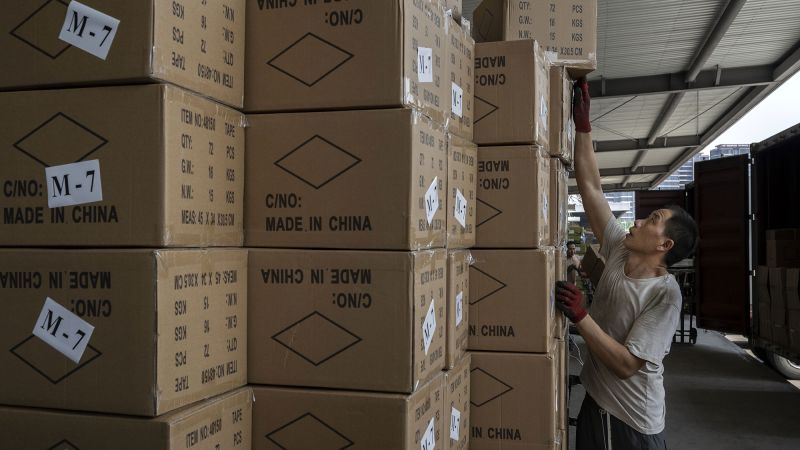In April 2018, President Donald Trump announced the implementation of “reciprocal” tariffs aimed at renegotiating fair trade agreements with various nations. Just prior to the tariffs taking effect, Trump remarked that many countries were eager to negotiate, stating, “They are calling us up, kissing my a**. They are dying to make a deal.” Such bravado, however, soon juxtaposed with the hard reality that negotiations were far from productive. Following the announcement of tariffs on April 2, financial markets experienced steep declines as nations threatened retaliation against the United States, leading to intensified losses among investors and prompting even Trump’s staunch supporters to urge the president to reconsider.
By April 9 at 12:01 a.m. ET, the tariffs were enacted, only for Trump to announce a 90-day pause shortly after. This pause was framed as an opportunity to iron out “bespoke” trade deals, further indicating that the administration was under pressure to stabilize the financial markets and mitigate backlash from affected nations. Despite ongoing rhetoric about imminent trade agreements, progress remained limited. As a self-imposed deadline of July 9 approached, Trump and his team’s promises of individualized trade deals began to show signs of strain, with only an agreement with the United Kingdom having been finalized.
Trump’s administration suggested that issues with negotiations stemmed from other countries failing to engage in “good faith.” While they cited this lack of cooperation, their responses hinted at escalating tariffs as a potential consequence, which would go beyond the already significant rates announced earlier. During a press event, Trump mentioned that letters outlining new business costs in the U.S. would soon be sent out by Treasury Secretary Scott Bessent and Commerce Secretary Howard Lutnick. This assertion foreshadowed further adjustments in tariff strategy.
Interestingly, Trump viewed the initial “reciprocal” tariffs, which could reach as high as 50%, as “fair.” He suggested that a full reciprocal approach would be detrimental to many nations, implying a level of empathy that contradicted his aggressive trade stance. On a Sunday interview with CNN’s Jake Tapper, Bessent hinted at developing a regional tariff strategy, indicating that differing rates could be applied based on geographical proximity—an approach that could increase costs for countries neighboring China, which was a primary target for tariff elevation.
While officials in the White House presented this regional tariff strategy, they also faced limitations. Questions arose over how proximity to China would directly impact tariff rates, and whether such a system would indeed simplify negotiations. The assertion that adjustments would be bespoke undermined the legitimacy of blanket tariffs, raising concerns about potentially negative consequences for nations with fairer trade practices.
Keith Rockwell, a former director at the World Trade Organization, emphasized that there exists a highly complex U.S. tariff classification system comprised of over 17,000 unique product codes. He explained that creating individualized tariffs for every trading partner alongside product variations would complicate the overall regulatory framework, leading to inefficiencies and confusion that the WTO’s “Most-Favored Nation” system was designed to alleviate.
This notion of simplicity highlights the allure of regional trade agreements, such as the United States-Mexico-Canada Agreement (USMCA) and the Dominican Republic-Central America Free Trade Agreement (CAFTA-DR). These agreements simplify tariffs and streamline commerce among partnership nations. However, grouping countries under a singular tariff policy poses inherent risks as well. It provides a unified basis for retaliation against the U.S., leading to more coordinated and potentially impactful pushback compared to individual negotiations.
Ultimately, Trump’s administration faced the dual challenge of navigating complex negotiations while fostering economic relationships that deterred retaliatory actions. As officials continued to discuss alternatives, including potential regional agreements, the reality of escalating trade tensions loomed large, reminding both the administration and affected countries of the delicate balance that must be maintained in international trade diplomacy. The future of U.S. trade policy stood at a crossroads; it remained to be seen how the Trump administration would reconcile its claims of tailored agreements with the realities of global economic interdependence.



